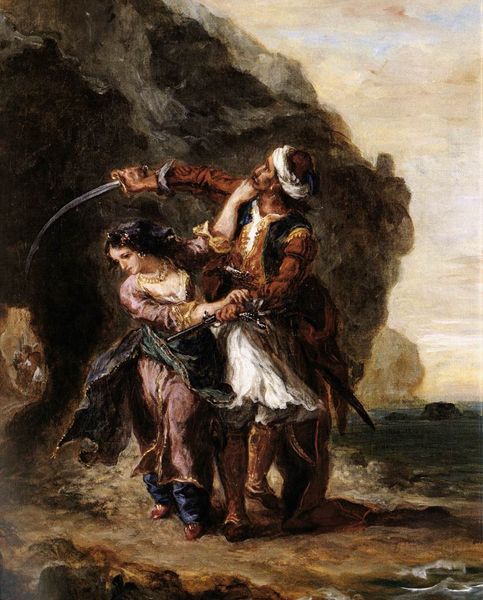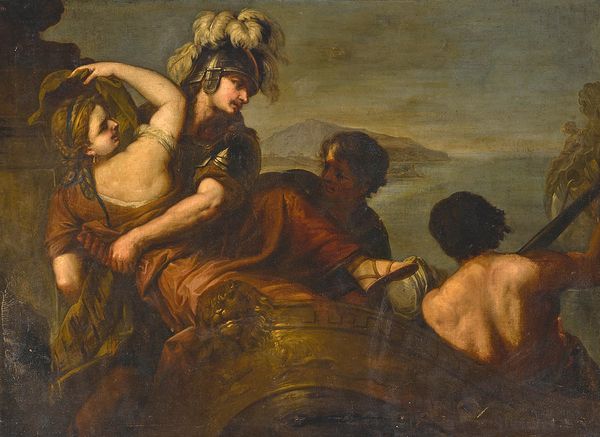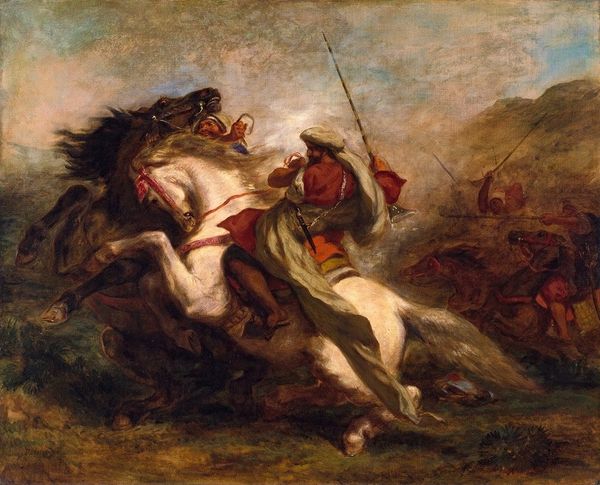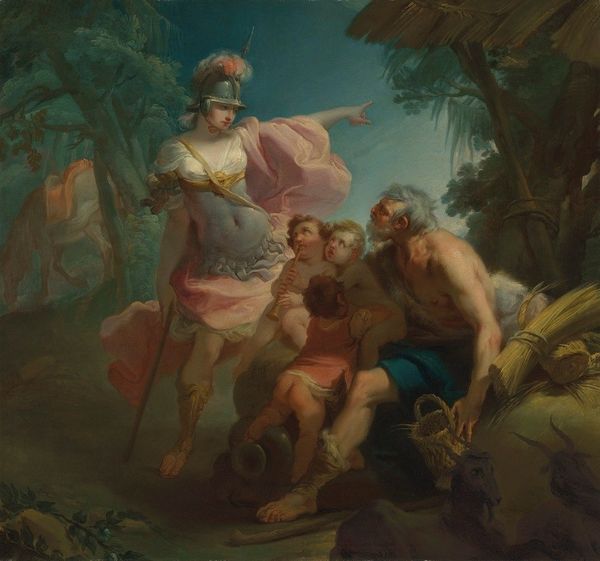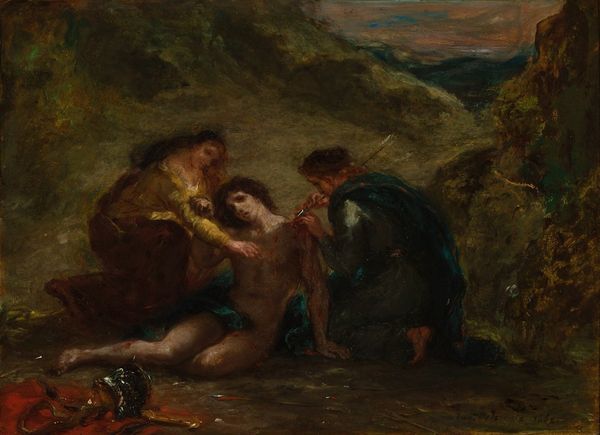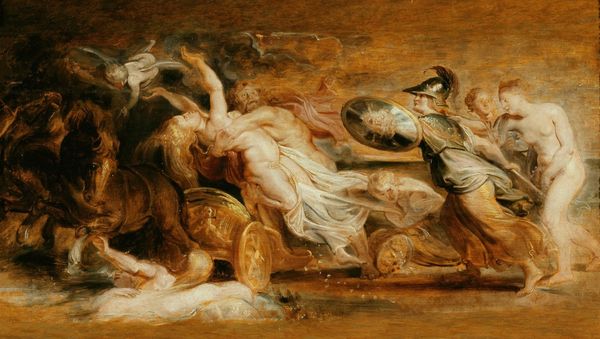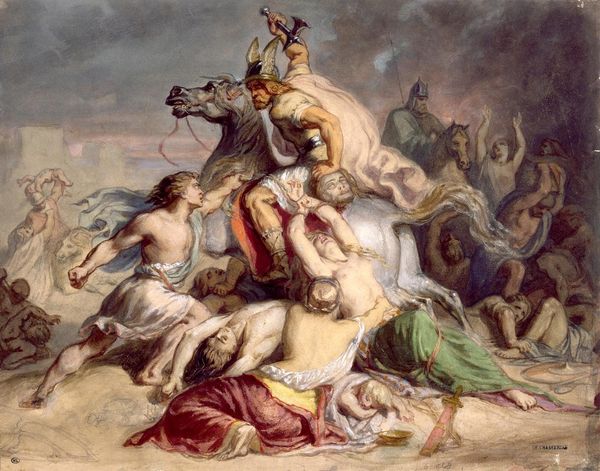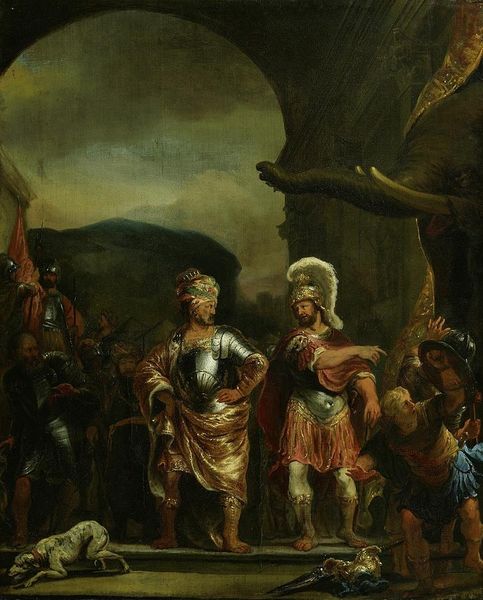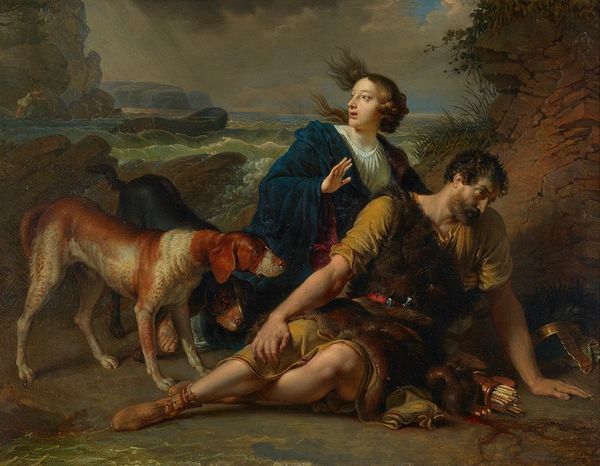
Copyright: Public Domain: Artvee
Curator: Eugène Delacroix, a leading figure of the Romantic movement, painted “Selim and Zuleika” in 1857. What's your initial take on this oil painting? Editor: A rather dramatic scene unfolds, doesn't it? A palpable tension in the composition, a swirling storm reflected in the characters' desperation. There's something about the woman's gaze, averted but fearful, that pulls me in. Curator: The painting depicts a scene inspired by Lord Byron's poem, "The Bride of Abydos." It is set against a tumultuous landscape that reflects the internal conflict within the narrative, specifically the fraught relationship between Selim and Zuleika. Byron’s poem reflects, in a European lens, Orientalist tropes which should certainly be explored and unpacked here too, considering its popularity within artistic circles. Editor: Absolutely. And seeing it through the lens of Byron's poem highlights the Romantic obsession with exoticism and the "Orient," fraught with power dynamics and cultural projections. It also leads one to consider gender roles and colonial gaze, both pertinent lenses here. What’s fascinating is that Delacroix positions Zuleika centrally, not just as a victim, but also as a focal point, even though she's being shielded. Curator: Her role certainly complicates any straightforward interpretation. Delacroix uses contrasting light to highlight Zuleika's pale face and her apparent fragility, playing with stereotypical ideas of the passive, threatened woman, a frequent and often disturbing theme of Romantic-era Orientalist fantasies. How much agency does she have amidst this apparent rescue? Editor: Exactly. And if we consider the politics of imagery, it begs the question: what is Delacroix attempting to communicate about cultural and gendered roles through his visual interpretation of Byron's verse? His brushwork is incredibly loose, creating a sense of immediacy. The impending violence hangs heavy in the air. You can see hints of additional figures in the darkened area to the left. A visual tension born out of possible intervention and possible death, a precarious tightrope on which cultural representation also stands. Curator: Indeed, he uses gestural brushstrokes to create movement and to evoke emotion. The raw emotion aligns it closely with Romantic sensibilities that valued expression and passion above all. Delacroix's approach invites conversations around how art can simultaneously reinforce and question social narratives. Editor: Thinking about it, "Selim and Zuleika" captures not only the spirit of Byron’s poem but also a much larger and critical discussion around Orientalism and identity. Curator: Ultimately it allows us to grapple with how these themes are portrayed, interpreted, and still influence dialogues around cross-cultural interactions today.
Comments
No comments
Be the first to comment and join the conversation on the ultimate creative platform.
